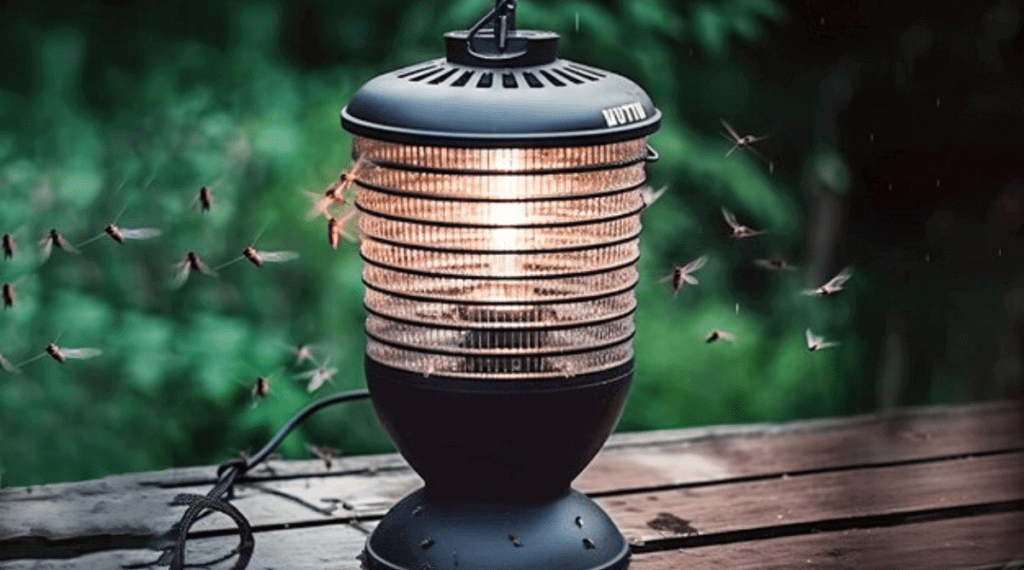Bug Zapper vs Bug Light: Which One Should You Choose?
Table of Contents
You can check out the UV black Lights
Dealing with flying pests like mosquitoes and flies can be challenging. Two popular tools for pest control are bug zappers and bug lights. Both are effective in their way, but their functionality and results differ significantly. This article explores their features, pros, and cons, helping you make the right choice.

What Are Bug Zappers?
Bug zappers use ultraviolet (UV) light to attract insects. Once the bugs approach, they are electrocuted using a high-voltage grid. These devices are effective for managing a wide range of flying insects.
However, bug zappers often harm beneficial insects like bees and butterflies, which can upset the local ecosystem. Studies show they are less effective against mosquitoes, as these pests aren’t significantly attracted to UV light.
Pros of Bug Zappers
- Effective in killing a variety of flying insects.
- Chemical-free, making them safe for children and pets.
- Low-maintenance and suitable for large outdoor areas.
Cons of Bug Zappers
- Harm beneficial insects, and disrupt the environment.
- Ineffective against mosquitoes.
- Produce noise and debris that can be unpleasant.
What Are Bug Lights?
Bug lights transmit specific wavelengths of light that are less attractive to insects. They don’t kill bugs but reduce their presence in patios or doorways.
These devices are ideal for maintaining a bug-free space without harming beneficial species like pollinators. However, they may not be effective in areas with severe pest infestations.
Pros of Bug Lights
- Eco-friendly, preserving beneficial insects.
- Quiet and safe for households.
- Energy-efficient and deterrent-focused.
Cons of Bug Lights
- Limited to repelling bugs; don’t reduce populations.
- Effectiveness depends on proper placement and light intensity.
- Less useful in high-infestation zones.
Key Differences Between Bug Zappers and Bug Lights
The primary difference lies in their purpose. Bug zappers actively kill bugs, while bug lights deter them without causing harm. Bug zappers are better for reducing insect populations, but bug lights are more environmentally friendly.
Choosing the right tool depends on your needs. Bug zappers effectively eliminate pests, but bug lights are a better choice for maintaining a safe, bug-free area without harming insects.
Tips for Optimal Use
- Place Strategically: Keep devices away from seating areas but near pest entry points.
- Combine Methods: Eliminate standing water and use repellents alongside these devices.
- Maintain Regularly: Clean bug zappers and ensure bug lights emit the correct intensity.
FAQS
1. Are bug zappers safe to use indoors?
Yes, but ensure proper placement away from flammable materials and out of children’s reach. Indoor use may also create noise and debris, so regular cleaning is necessary.
2. Do bug lights work against mosquitoes?
Bug lights can help deter mosquitoes but don’t eliminate them. They are better suited for keeping bugs away from specific areas like patios or doorways.
3. Which option is better for outdoor areas?
Bug zappers are typically more effective in large outdoor spaces because they kill pests. Bug lights are suitable for outdoor areas where you want to deter insects without harming them.
4. How often should bug zappers or lights be cleaned?
Bug zappers should be cleaned weekly or whenever debris builds up. For optimal performance, bug lights require occasional maintenance, such as bulb replacement.
5. Can I use bug zappers and bug lights together?
Yes, combining both can be an effective strategy. Use zappers to reduce pest populations and lights to deter bugs from specific areas.
Conclusion
Choosing between a bug zapper and a bug light depends on your pest control needs. Bug zappers are great for reducing insect populations, especially in large areas, but they may harm beneficial insects and are less effective against mosquitoes.
Bug lights, on the other hand, are eco-friendly and ideal for deterring bugs without disrupting the environment. Proper placement and combining these tools with other pest control methods can enhance their effectiveness. Select the option that aligns with your priorities, whether it’s eco-friendliness, noise-free operation, or comprehensive pest reduction.
